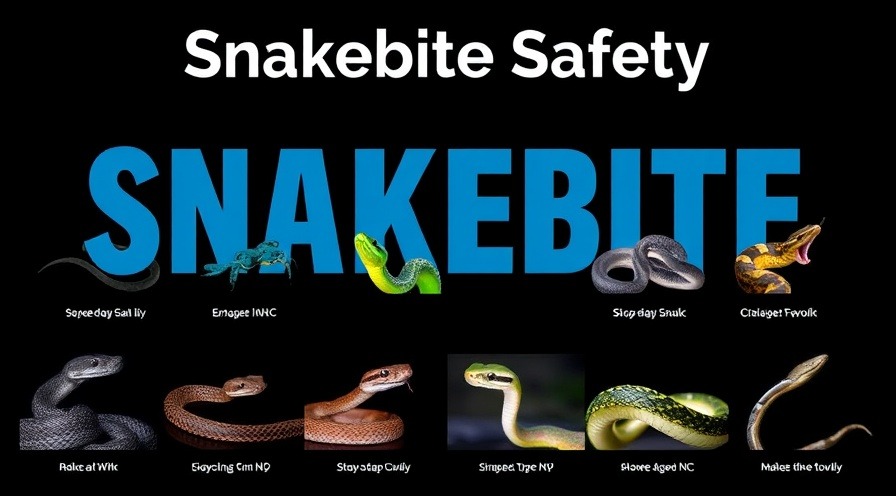
Understanding Snakebites: A Growing Concern
As temperatures rise, outdoor activities become increasingly popular. Unfortunately, these gatherings can put people at risk of snakebites, particularly in regions like North Carolina where the copperhead snake is prevalent. Being aware of your surroundings and taking precautionary measures are vital for preventing snake-related incidents.
In 'Snakebite Safety', the discussion dives into the dangers of snakebites during outdoor activities, exploring key insights that sparked deeper analysis on our end.
Common Scenarios for Snakebites
Many people may not realize that leisure activities, such as taking the trash out during dusk, can lead to unexpected encounters with snakes. Injuries often occur when people are wearing inappropriate footwear, like flip-flops, which can worsen the situation in case of a bite. Such seemingly mundane tasks should be approached with caution, especially in areas known for high grass or leaf litter where snakes often lurk.
Immediate Steps to Take After a Snakebite
If you or someone else is bitten by a snake, the first response should be to remain calm. Understanding the basics can be life-saving: the most common envenomating snake in certain areas, like North Carolina, is the copperhead. Although their bites may be less severe, prompt medical attention is crucial. Never attempt common remedies you may have seen in films, such as cutting the wound or using ice; these methods can do more harm than good.
The Role of Antivenom and Novel Treatments
Currently, the optimal treatment for a snakebite is antivenom, which effectively neutralizes venom, allowing the body to excrete it. At research institutions like Duke, medical experts are pursuing innovative treatments that could revolutionize snakebite care. One promising advance is a pill that could be administered even in challenging environments, potentially before reaching a hospital. This could significantly improve the outcomes for individuals envenomated by snakes.
Promoting Safe Outdoor Practices
As outdoor enthusiasts, it’s important to cultivate a culture of safety. Wearing suitable footwear, being cautious in dense vegetation, and understanding the signs of a snakebite are all essential components of enjoying the great outdoors without a hitch. Travelling with a small first aid kit that includes bite mitigation supplies can also be beneficial during hikes or camping trips.
Concluding Thoughts on Snakebite Safety
Understanding snakebite safety and recognizing the immediate actions needed in the event of a bite can make a significant difference in outcomes. With ongoing research and innovative treatments on the horizon, the future looks hopeful for snakebite management and prevention. As we enjoy nature, let’s stay informed and prepared.
 Add Row
Add Row  Add
Add 




 Add Row
Add Row  Add
Add 

Write A Comment